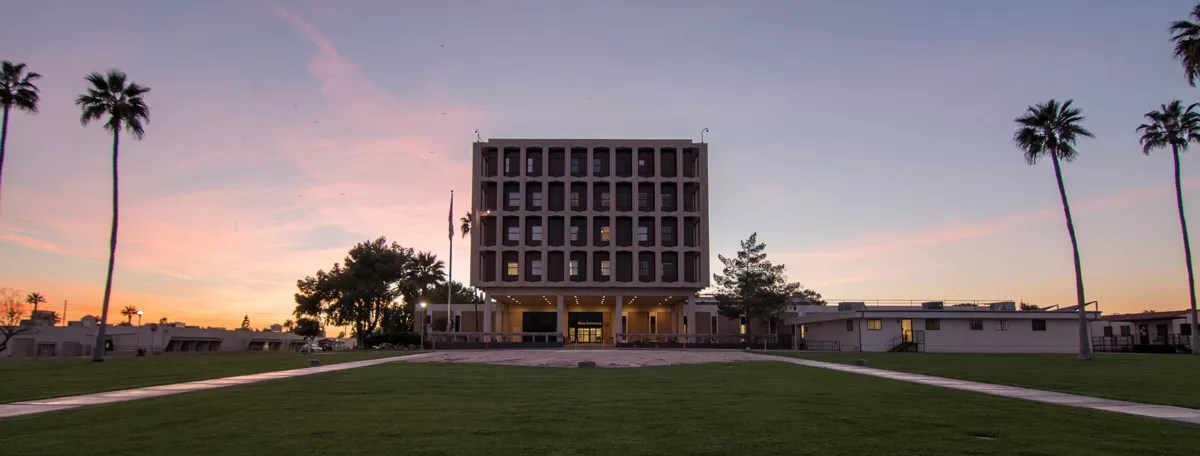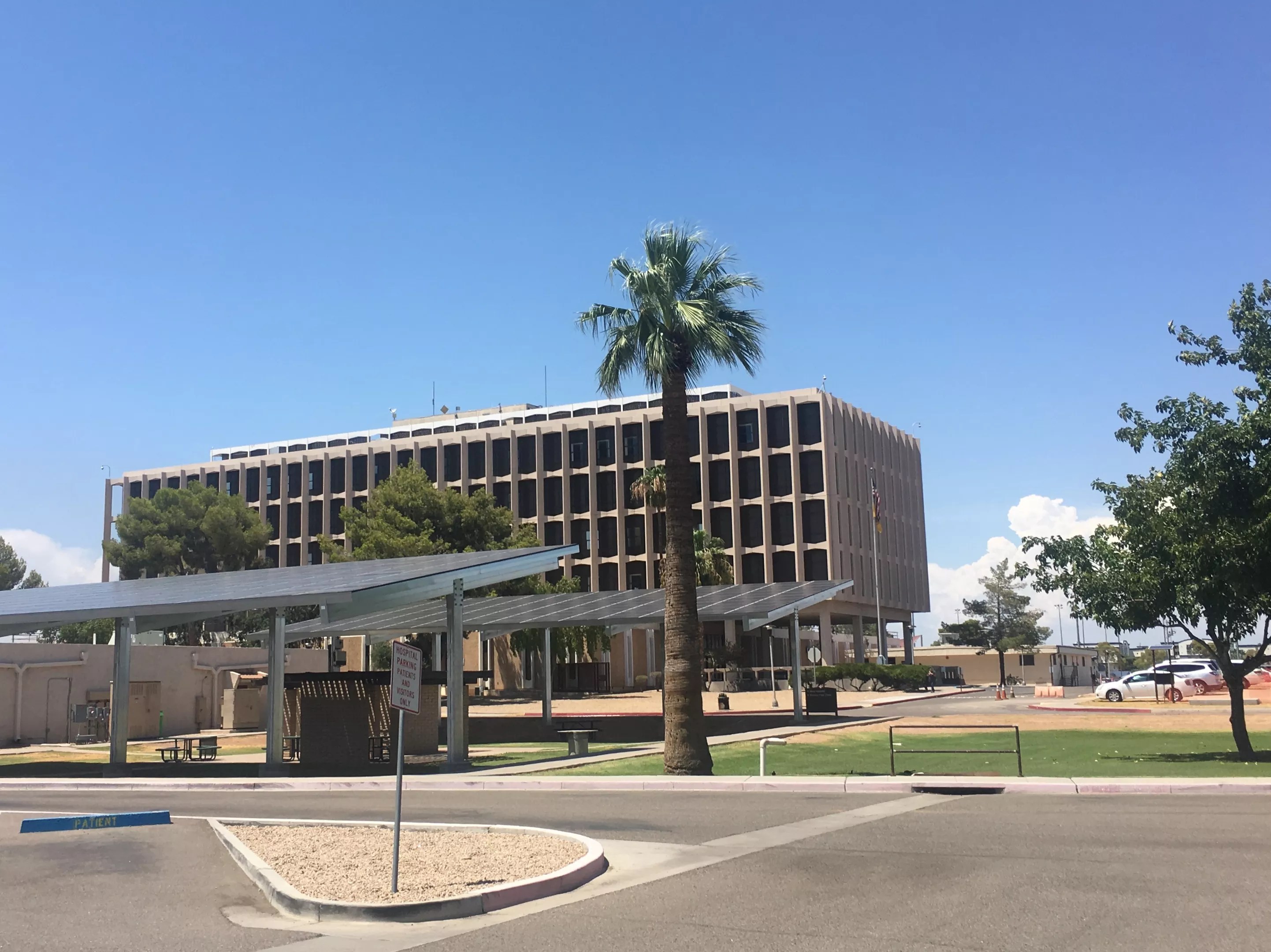
IHS.gov

Audio By Carbonatix
The nationwide opioid epidemic has touched the lives of people just about everywhere, but tribal communities have been among the hardest hit.
A new audit of five Indian Health Services hospitals, including the Phoenix Indian Medical Center, found that those hospitals did too little to follow their own guidelines in prescribing and dispensing these highly addictive and, all too often, deadly painkillers.
Nor did they do enough to use tools like state-level electronic databases that aim at reducing prescription drug abuse, the audit found. In some cases, IHS pharmacies blindly filled opioid prescriptions from other medical facilities.
A report of the audit, which was conducted by the Inspector General’s Office at the U.S. Department of Health and Human Services, was published in mid-July. Auditors visited those hospitals in 2017.
From 1999 to 2015, the death rate increased more in tribal communities than among any other racial and ethnic groups, according to the Centers for Disease Control and Prevention. In 2015, the death rate from overdoses was the highest among American Indian and Alaska Native people than among any other group. The trend holds true at a state level in Arizona.
Since kicking off the late 1990s, the opioid crisis has forced people in the health care industry to acknowledge how dangerous these painkillers are. Take them for five days, and your odds of becoming addicted skyrockets. To manage the risk properly, the CDC calls on physicians to prescribe the lowest dosages necessary, for as little time as possible, for patients who have chronic pain.
Those guidelines also describe how doctors need to work incredibly closely with their patients to manage that pain and their opioid prescriptions safely, pointing to the importance of the people and institutions prescribing the opioids in avoiding addiction and carefully weaning patients off these drugs.
But the five sample hospitals of the Indian Health Service, which is supposed to provide medical care to 2.6 million American Indians and Alaska Natives, are falling short.
When they reviewed hospital procedures and policies, interviewed staff, and looked at patient records, auditors found that hospitals did not always review patient records before filling prescriptions. They didn’t always carry out required drug screenings or review treatment plans on time, as required by the Indian Health Manual that they were supposed to follow. At all the hospitals, they found patients who were given opioids in amounts that exceeded federal guidelines.

The Phoenix Indian Medical Center
Elizabeth Whitman
Nor did these hospitals consistently check their state’s electronic databases, known as a prescription drug monitoring program, for a patient’s prescriptions before prescribing or filling opioids. Two of the hospitals, including Phoenix, did not send their own data back to that database on a daily basis as required. Instead, the Phoenix hospital reported that data Monday through Friday, despite its pharmacy being open 24 hours, seven days a week.
“We found that hospitals did not always use available data to identify risks in their prescribing and dispensing practices,” the report said. Instead, at times, hospitals gave patients extremely high doses of opioids, or they prescribed opioids simultaneously with benzodiazepines – sedatives that are also addictive and that increase the risk of fatal overdose when taken with opioids.
In a few cases, the opioids themselves were not physically secure. In Phoenix, opioids for discharged patients weren’t locked; officials told the auditors that it was because they did not have the space to do so.
The other hospitals reviewed were in Cass Lake, Minnesota; Fort Yates, North Dakota; Lawton, Oklahoma; and Shiprock, New Mexico. Across the U.S., the IHS has 24 hospitals, 50 health centers, and 24 health stations. The audit did not directly link these hospitals’ prescribing practices with specific consequences like addiction, overdose, or death.
The Indian Health Manual requires that before a hospital pharmacist fill a prescription, he or she must check a patient’s full health record. But at four of the five hospitals, including Phoenix, pharmacists who were filling prescriptions from non-IHS providers didn’t check those backgrounds.
When the auditors looked at records from 150 patients from across all five hospitals, they found that 22 of those patients had opioid prescribed by a non-IHS hospital but filled by an IHS pharmacy, even though the patients’ records had no information in them about why the opioids were prescribed in the first place.
Dr. Marie Russell, the chief medical officer for the Phoenix Indian Medical Center, said that the hospital has fixed most of the problems that auditors found since their visit in November 2017, which were shared with the hospital in real time.
She said the hospital appreciated the auditors’ findings, calling them opportunities for improvement. Their feedback “allowed us to concentrate our efforts more specifically,” Russell said. “Any time there’s an epidemic, there’s an opportunity.”
As for why the hospital had had those issues in the first place, Russell suggested the issue boiled down to poor timing.
In 2017, when the auditors came to town, the CDC’s prescribing guidelines and Arizona’s own prescription drug monitoring program (PDMP) were relatively new, which was why the hospital hadn’t fully implemented their use, she said.
Today, “there’s not a narcotic prescription that is filled here without the PDMP being queried,” she said. “We’ve markedly decreased the number of opioid prescriptions, as has occurred across the country.”
Asked what the hospital had done to address the fact that physicians weren’t always reviewing patients’ courses of treatment and conducting drug testing on time, Russell said that electronic health system alerts had been set up to remind doctors and nurses.
She said that pharmacists also received reminders to review patient records before filling prescriptions from outside doctors. “It is not common practice that opioids would be prescribed without appropriate medical review,” she said.
The hospital now keeps opioids in a place that requires employee authentication, Russell added.
The opioid epidemic is far from over, and it is still taking a disproportionate toll on native communities. In 2017, the year auditors visited IHS hospitals, the death rate among American Indians and Alaska Natives was the second-highest not just from all opioids, but from heroin, too.
Last October, a white paper by the Inter Tribal Council of Arizona examined the opioid epidemic among tribal communities, uncovering other serious gaps in the way the epidemic is handled.
It pointed out that compared to all other groups in Arizona, tribal communities suffered the second-highest opioid overdose death rate from 2007 to 2016. Between 2016 and 2017, Indian Health Service facilities had a growing number of visits related to opioids – 1,784 versus 2,529.
Arizona tribes lacked access to tribal-specific data about opioids. They also had few resources to treat people with addiction or prevent addiction in the first place, the paper said.
“National and state policies, such as the 21st Century Cures Act and the Arizona Opioid Epidemic Act, are efforts to reduce opioid related deaths and treat Opioid Use Disorder, yet these initiatives exclude direct funding to Tribes,” the report said.
It called for more local monitoring, increased access to naloxone for law enforcement and first responders, more funding for advocacy and education, and possible litigation against pharmaceutical companies that could result in damages for use in treatment, prevention and education.
Tribes could also declare a public health emergency, it said.
In June, 211 people in Arizona died from opioid overdoses, according to the Department of Health Services. In the past two years, more than 3,330 people have died, out of nearly 24,000 suspected opioid overdoses.